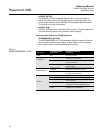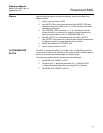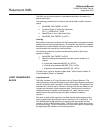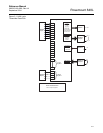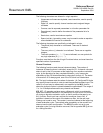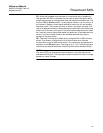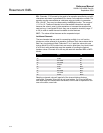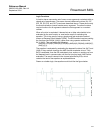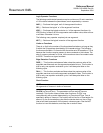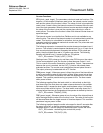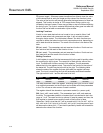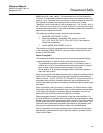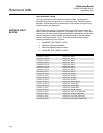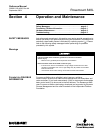
Reference Manual
00809-0100-4696, Rev AA
September 2004
Rosemount 848L
3-16
Logic Operator Functions
The following combinatorial operators require a minimum of 2 and a maximum
of 10 functions between the parentheses, each separated by a comma.
AND ( ) - Performs the logical ‘and’ of the argument functions.
OR ( ) - Performs the logical ‘or’ of the argument functions.
XOR ( ) - Performs the logical exclusive ‘or’ of the argument functions. An
XOR function is false if all of the arguments are the same value, either all true
or all false. Otherwise it is true.
The following unary operator requires just one argument:
NOT ( ) - Performs the logical inversion of the argument function.
Limits on Functions
There is no limit to the number of functions described above, as long as they
fit within the 20 equations described by 80 character strings. The following
functions are limited to 10 of each within the entire set of 20 equations. This is
because the functions require memory to store constants or last values. The
size of a memory element is 16 bits, so the maximum size of a constant value
is 65535. There are no signed numbers.
Edge Detection Functions
RISE ( ) - This function evaluates as false unless the previous value of the
argument was false and now the argument evaluates to true. This function is
true for only one equation evaluation cycle. It will always be false on the
following cycle.
FALL( ) - This function evaluates as false unless the previous value of the
argument was true and now the argument evaluates to false. This function is
true for only one equation evaluation cycle. It will always be false on the
following cycle.
Clock Function
NOTE
All arguments of time are in tenths of a second.
CLOCK (onTime,offTime) - The parameters onTime and offTime are
constants. This function does not take other functions. CLOCK runs
unconditionally with a period determined by onTime plus offTime. Time is
specified in tenths of a second. The function will be true for onTime tenths of a
second. On the first evaluation cycle after the device starts up, the onTime
interval will start because all of the dynamic values are zero. Use the NOT
function to invert this behavior, and swap the on and off times.



